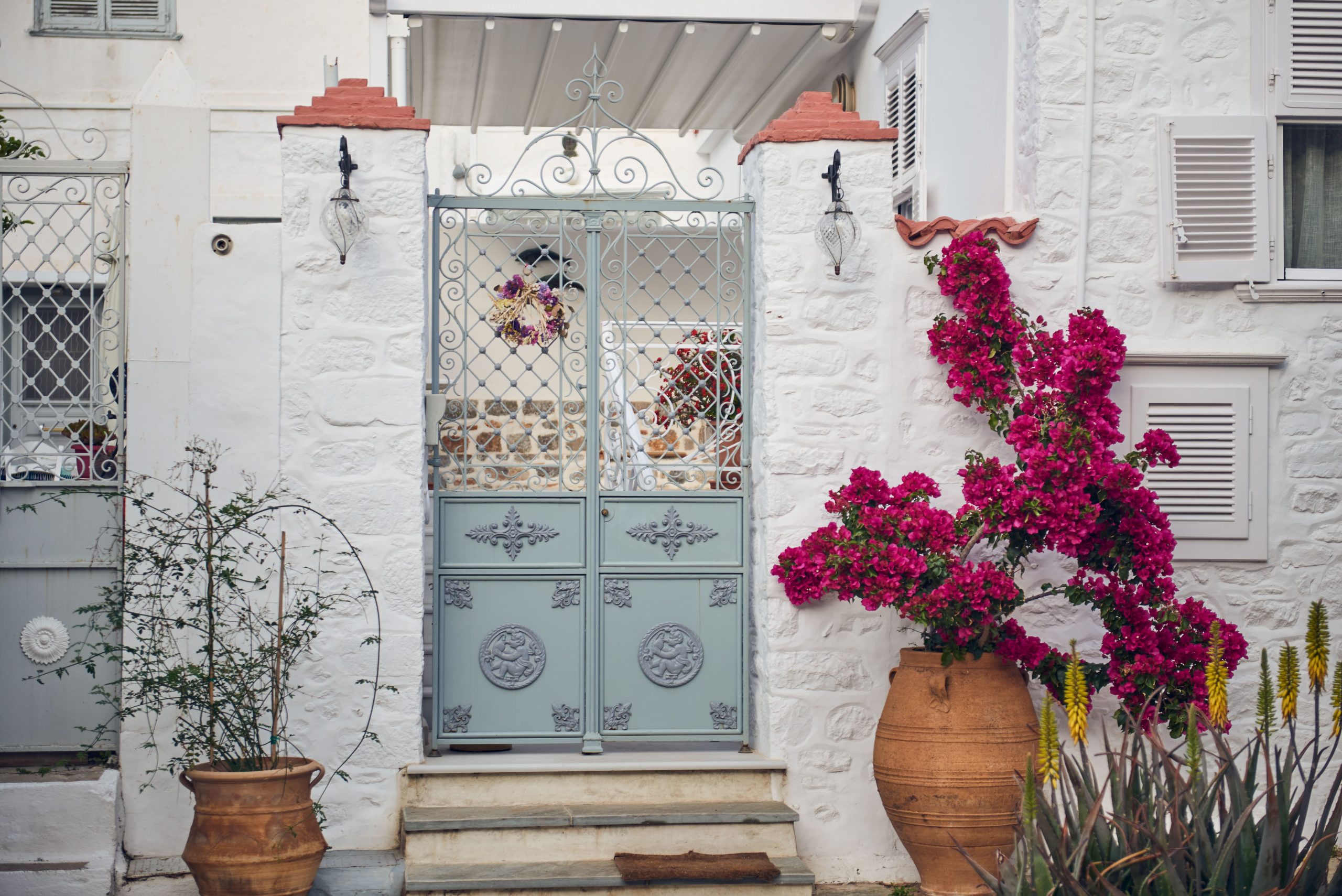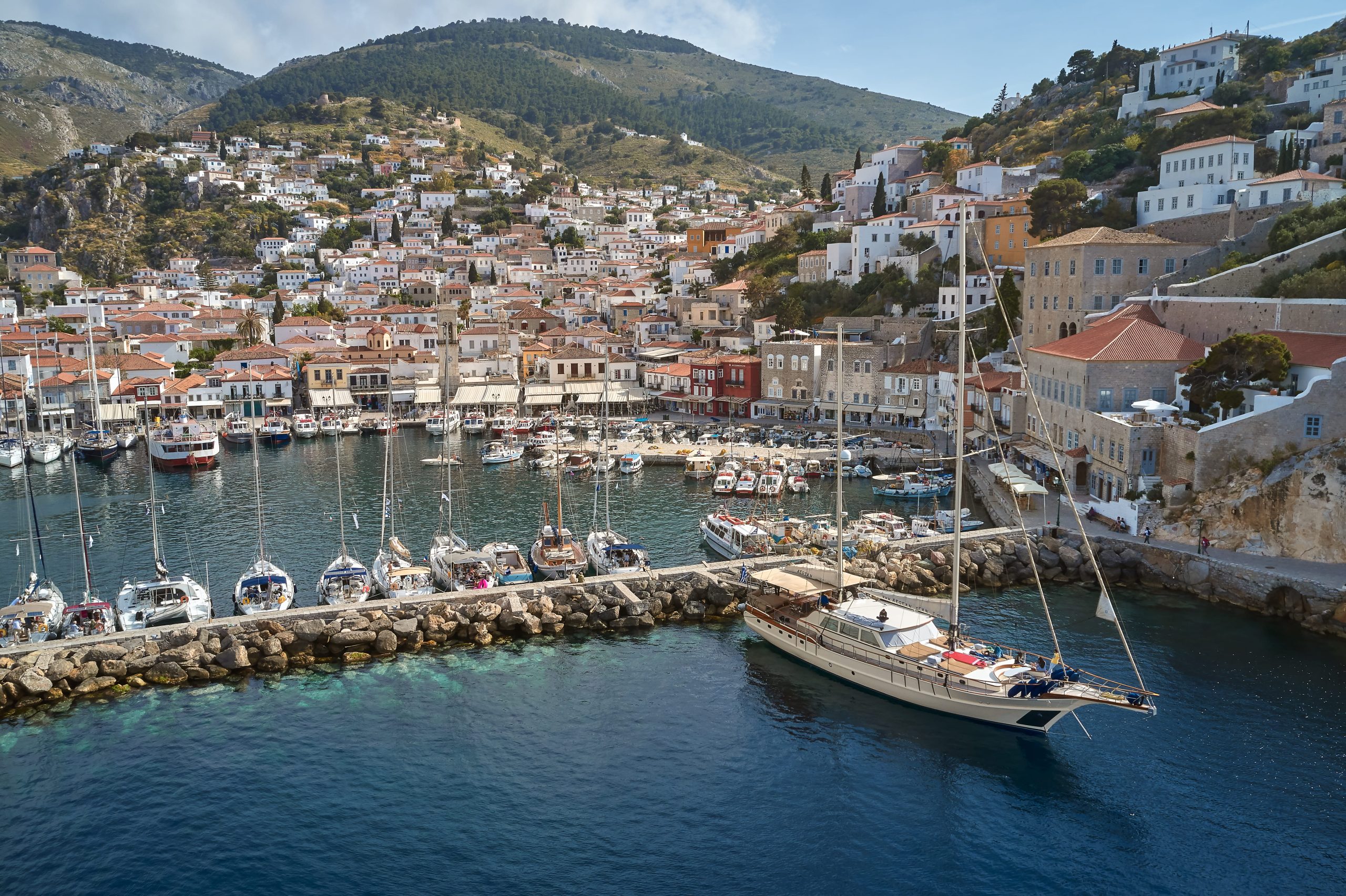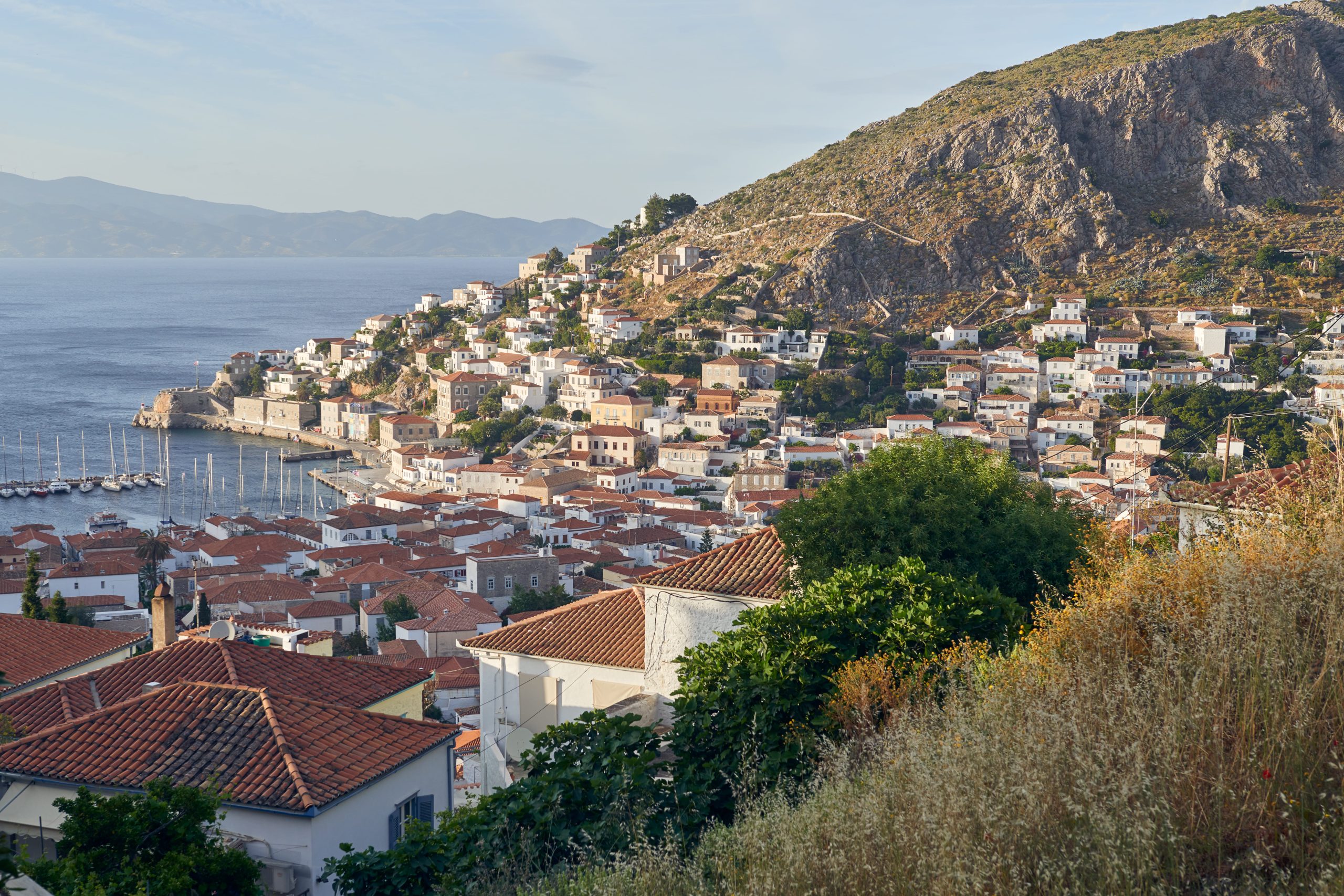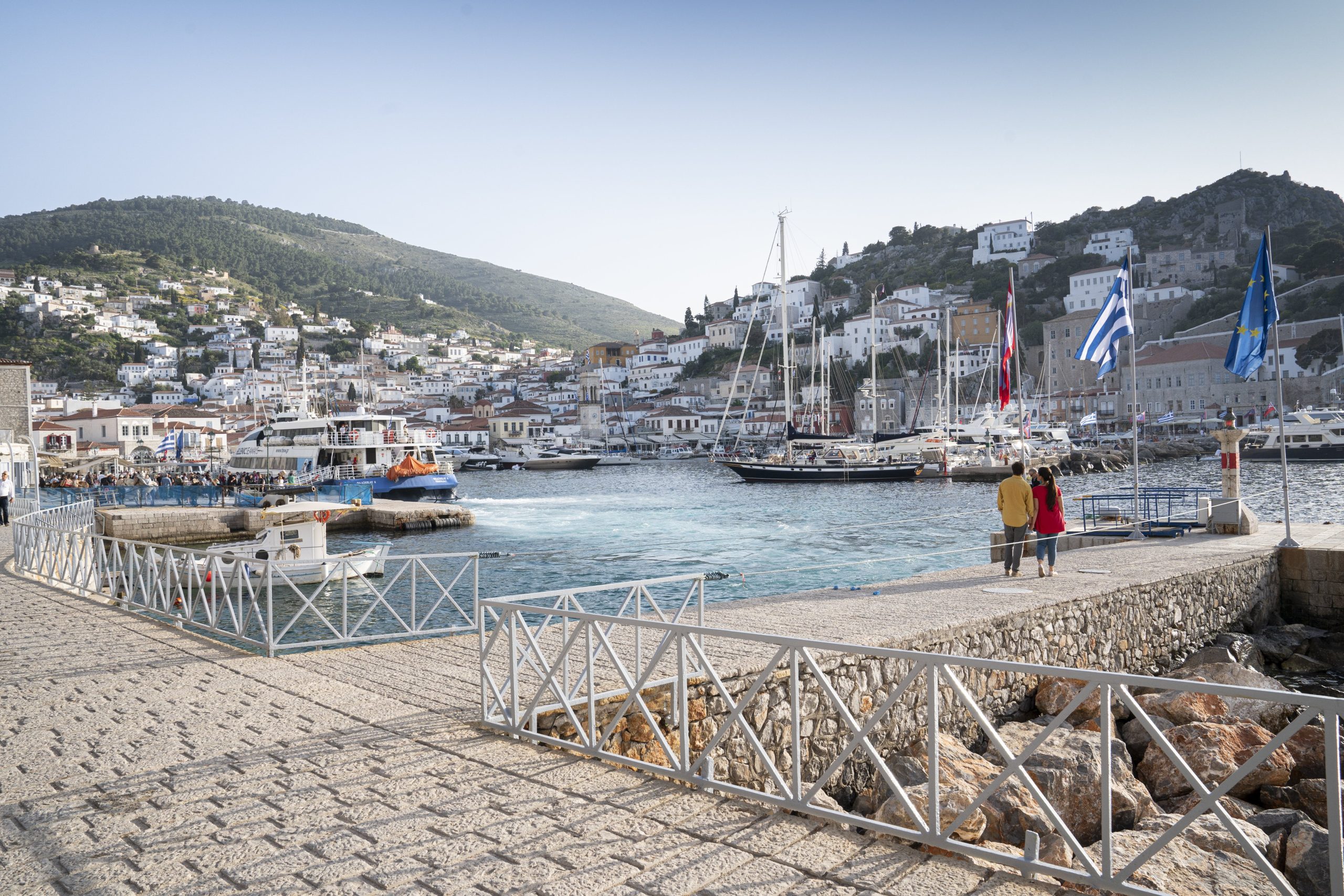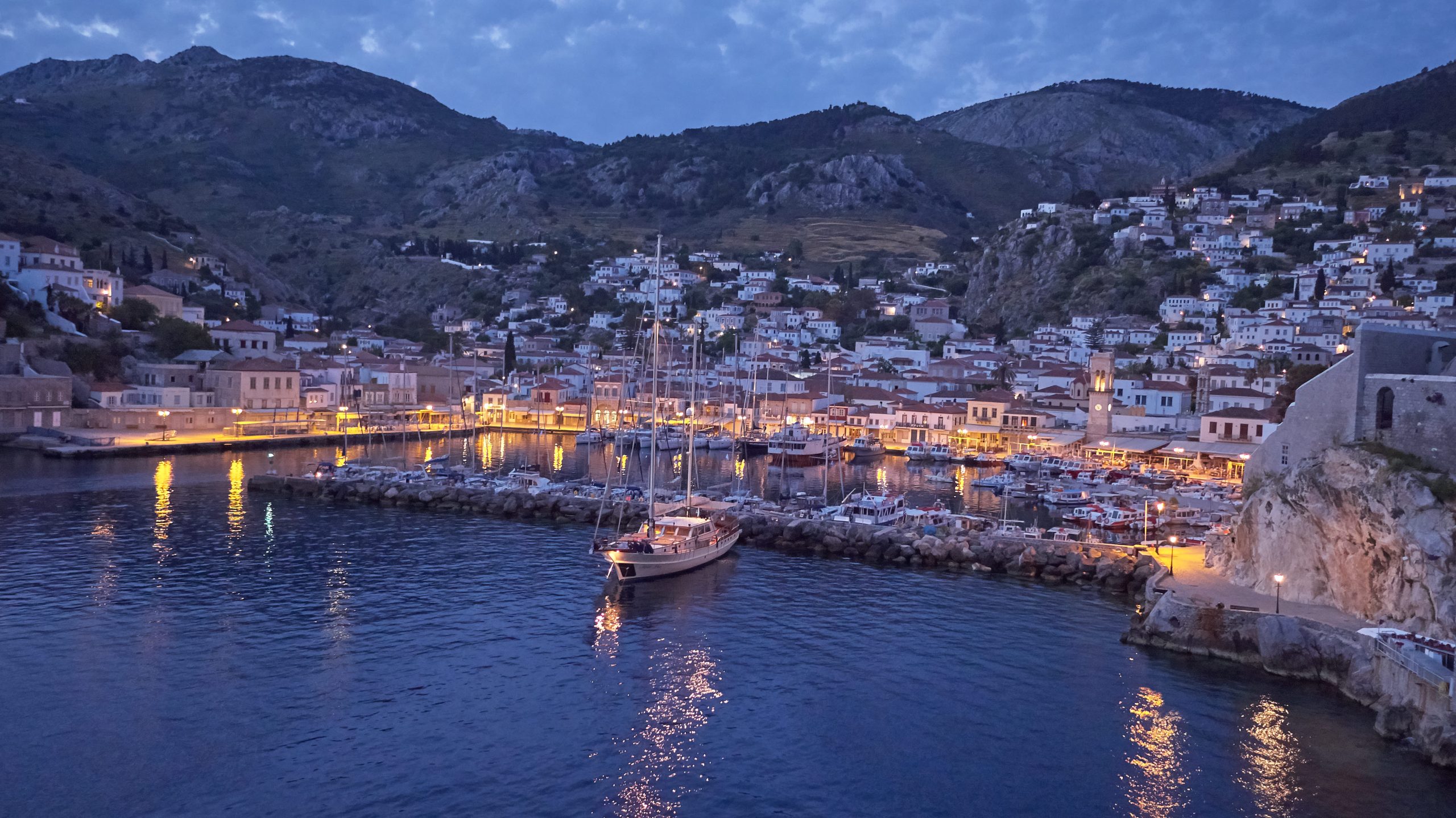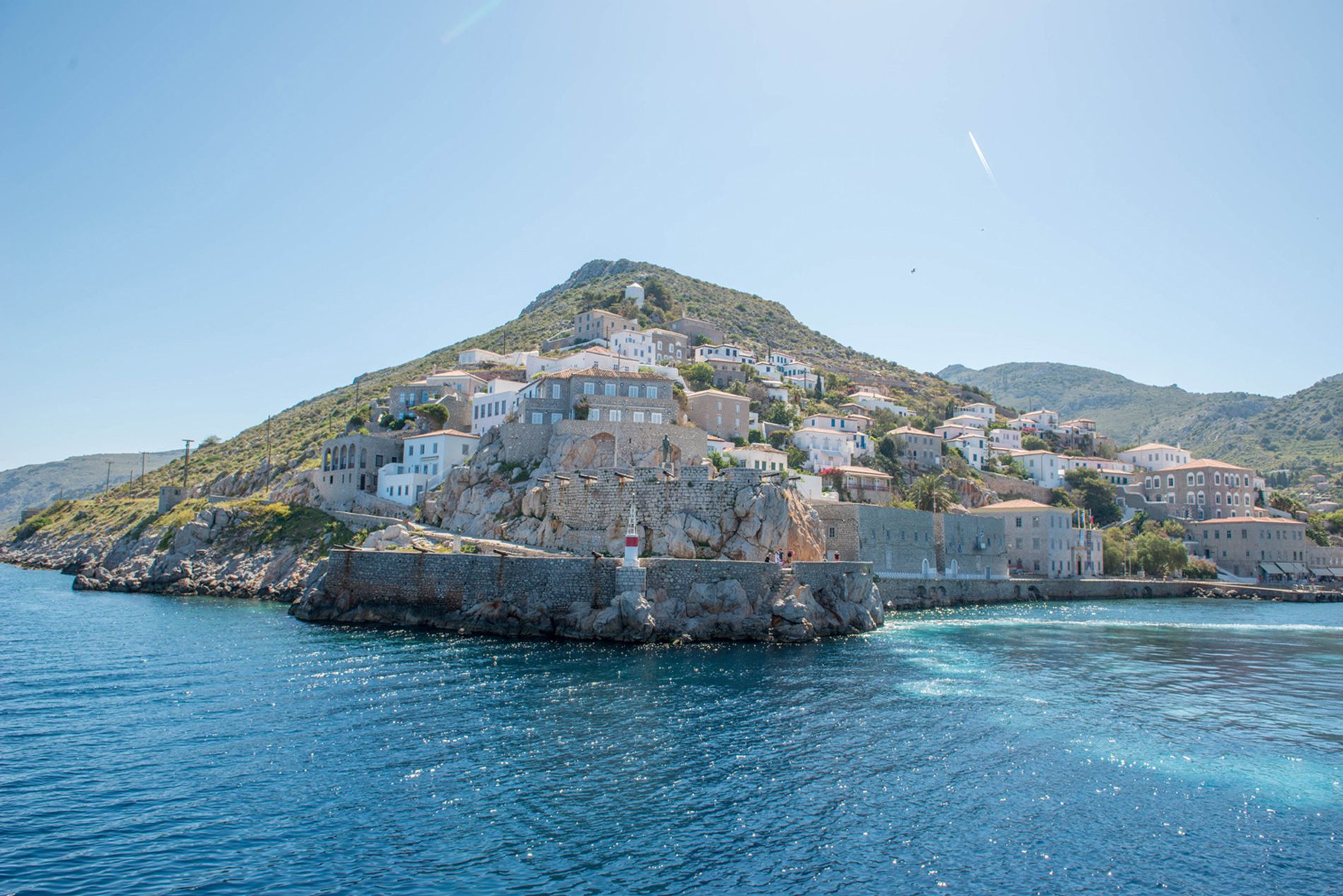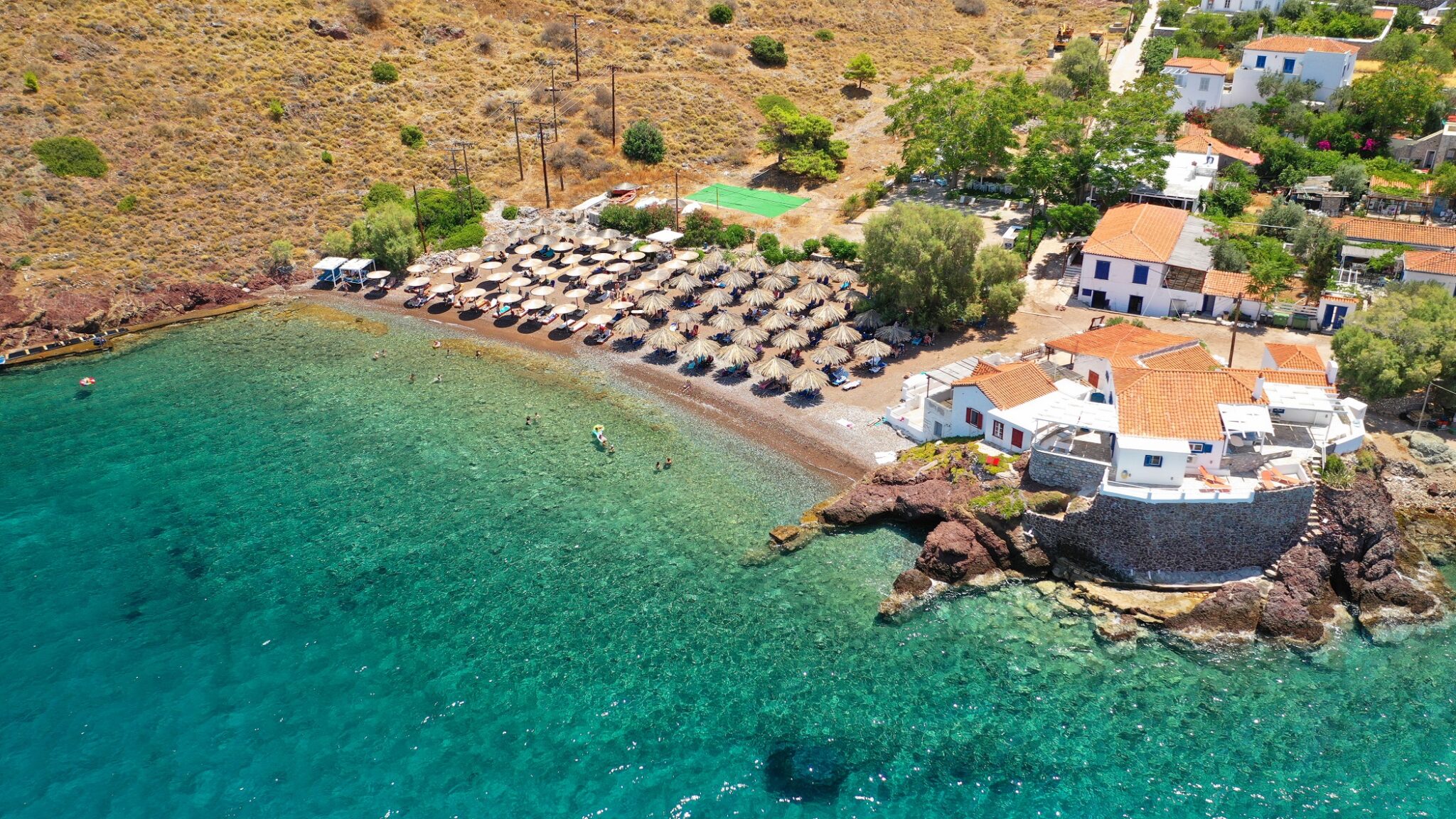Hydra
Hydra
Hydra – Absolutely addictive
Hydra is for romantics. Love birds and newlyweds seeking an idyllic getaway; movie buffs longing to see the location where the beautiful actress Sophia Lauren emerged from the crystal blue waters in the 1957 movie, “Boy on the Dolphin;” music enthusiasts dreaming of visiting the home of the late Leonard Cohen.
On Hydra, art, beauty and romance abound. As such, the small amphitheatrically built town has, over the decades, established a large international community of steady vacationers, many of whom have built homes on the island. Although often referred to as “cosmopolitan,” the island remains true to its seafaring tradition and pays homage to its rich naval heritage.
It is the navy of Hydra that brought wealth and prosperity to the island, transforming this rocky landscape into an architectural marvel housing majestic mansions and towers, stone fountains and bougainvillea-draped gardens. Walk along the pedestrian-only streets and winding uphill paths and enjoy a breathtakingly beautiful sojourn of serenity.
Hydra Island is 38 miles from Piraeus, the major port of Greece at the entrance of the Saronic Gulf near the coast of the Peloponnese. Inhabited since the Neolithic era, Hydra takes its name from the numerous natural springs on the island.
No significant commercial, social or historical events occurred here until the 17th century when, due to the war and rampant piracy, a wave of internal migration led to the island’s settlement.
Eventually attracting a sizeable population, Hydra became home to several important families who established a vibrant maritime economy on the island. At its peak in the late 18th and early 19th centuries, Hydra’s strategic location proved to be commercially advantageous for the Mediterranean grain market. As the island’s financial and maritime power grew, so too did the fighting skills of its boat crews, who had learned the art of battle during skirmishes with pirates.
At the outbreak of the Revolution of 1821, with a population of 27,000 and a fleet exceeding 150 boats, Hydra played a major role in the Greek command of the sea. The islands of Spetses and Psara also provided fighting fleets for the cause. Major personalities like Miaoulis, Tobazis, Sahtouris, Koudouriotis, Kriezis and Tsamados were, at one time or another, leaders of the island.
General information about Hydra
Today, the picturesque island of Hydra has been listed as a preserved monument of architecture and history, meaning cars are strictly prohibited. From the 1950s until today, the island’s vibrant tourism industry has given Hydra the well-deserved title of the cosmopolitan capital of the Argo-Saronic Gulf.
Its relaxed charm, stunning architectural masterpieces, beautiful stone-paved streets and picturesque narrow paths offer visitors a truly unique experience year-round, especially during the summer months.
With myriad exhibitions, special events and activities, culture has a permanent presence on the island. Boat connections with Piraeus, the Peloponnese coast and the other islands of the Argo-Saronic Gulf are frequent and convenient, including ferries, Flying Dolphins, sea-taxis and private yachts.
Hydra is surrounded by incredible beaches to suit every taste:
- Spilia and Ydronetta: Endless diving fun awaits you at the rocks of Spilia and the pier of Ydronetta, near the main port.
- Plakes Vlychou: A lovely beach with crystal-clear waters, Plakes Vlychou is near the settlement of Vlychou, right by the chapel of Agia Paraskevi.
- Mpisti: This small, pebbly beach is surrounded by cliffs and offers a lovely view of the islet of Petasi. The beach is organized and ideal for diving and snorkelling.
- Agios Georgios: This beach is nestled between two pine-clad hills on the western coast of the island, near Cape Mpisti.
- Agios Nikolaos: This long beach with pebbles and crystal-clear waters has a scenic background featuring the chapel of Agios Nikolaos set against the lush surrounding hills.
- Mandraki: Hotel Miramare is located on this scenic beach, which features cafés, a tavern, and a beach bar.
- Kaoumithi and Nisiza: These small beaches can be accessed by boat or water taxi. Both feature pebbles as well as sand.
- Limnioniza: The most beautiful beach on the island’s southern coast, Limnioniza is perfect for spearfishing.
Attractions – what not to miss
Getting around in the town of Hydra and its environs can be quite an unusual experience, especially for first-time visitors, who are often surprised to discover that the only means of transportation on the island is on the back of Hydra’s beloved donkeys. We suggest that you enjoy the ride – it’s not only the best way to get an authentic island experience, but also the most fun.
During your trip, be sure to stop at the Historical Archive and Museum of Hydra, the statue of Miaoulis, the houses of Lazaros and Pavlos Koudouriotis, the Cathedral housing the Religious Museum and the Periptero area, with its magnificent sunset views. Famous for its footpaths, Hydra is perfectly designed for walks. Be it the easiest trail to Kamini or the more difficult ones to the summit of Eros, every path on the island is worth following.
Hydra is also the perfect destination for visitors celebrating Easter. During the festivities, visitors can attend a special ceremony held in Kamini, where the procession actually enters the sea. June is another special time to be in Hydra, with the unforgettable Miaoulia Festival taking place.
Gastronomy and Local Products
Any walk around the picturesque streets of Hydra should end seated at a table in a restaurant or tavern. After all, great food is perfect to round out any trip, and Hydra has some of the greatest local cuisine in Attica.
Starting from the port, with its view of the boats, visitors are encouraged to explore Hydra’s narrow streets to search for the most appealing taverns.
Try the plethora of delicious homemade dishes and tasty treats, their pungent aromas drawing throngs of hungry diners, or stroll down narrow, stone-paved streets and discover a café serving excellent Italian dishes.
For gourmet diners, the Nautical Club (Omilos) offers top-quality meals and an incredible view of the sea; if you prefer stunning views from above, head to the Periptero area, overlooking the Peloponnese coast, and savour delicious flavours. Just a short distance away, in Kamini, you can enjoy one of Hydra’s most exquisite experiences: taste the island’s fresh fish right by the sea.
And whatever you do, never leave Hydra without tasting the world-famous almond sweets or amygdalota.
INFORMATION
Port Phone: (+30) 22983 20200
Police Phone: (+30) 22980 52205
Hospital Phone: (+30) 22980 53150
Website: hydra.gr
How to get there
Piraeus to Hydra
Distance by Flying Dolphin: Depending on the route, the trip may take from 1 hour and 10 minutes to 2 hours.
Poros to Hydra
Distance by Flying Dolphin: 30 minutes
Spetses to Hydra
Distance by Flying Dolphin: Depending on the route, the trip may take from 30 minutes to 1 hour.
Ermioni to Hydra (summer period)
Distance by Flying Dolphin: 30 minutes
Porto Heli to Hydra (summer period)
Distance by Flying Dolphin: 1 hour and 20 minutes
Hydra – Absolutely addictive
Hydra is for romantics. Love birds and newlyweds seeking an idyllic getaway; movie buffs longing to see the location where the beautiful actress Sophia Lauren emerged from the crystal blue waters in the 1957 movie, “Boy on the Dolphin;” music enthusiasts dreaming of visiting the home of the late Leonard Cohen.
On Hydra, art, beauty and romance abound. As such, the small amphitheatrically built town has, over the decades, established a large international community of steady vacationers, many of whom have built homes on the island. Although often referred to as “cosmopolitan,” the island remains true to its seafaring tradition and pays homage to its rich naval heritage.
It is the navy of Hydra that brought wealth and prosperity to the island, transforming this rocky landscape into an architectural marvel housing majestic mansions and towers, stone fountains and bougainvillea-draped gardens. Walk along the pedestrian-only streets and winding uphill paths and enjoy a breathtakingly beautiful sojourn of serenity.
Hydra Island is 38 miles from Piraeus, the major port of Greece at the entrance of the Saronic Gulf near the coast of the Peloponnese. Inhabited since the Neolithic era, Hydra takes its name from the numerous natural springs on the island.
No significant commercial, social or historical events occurred here until the 17th century when, due to the war and rampant piracy, a wave of internal migration led to the island’s settlement.
Eventually attracting a sizeable population, Hydra became home to several important families who established a vibrant maritime economy on the island. At its peak in the late 18th and early 19th centuries, Hydra’s strategic location proved to be commercially advantageous for the Mediterranean grain market. As the island’s financial and maritime power grew, so too did the fighting skills of its boat crews, who had learned the art of battle during skirmishes with pirates.
At the outbreak of the Revolution of 1821, with a population of 27,000 and a fleet exceeding 150 boats, Hydra played a major role in the Greek command of the sea. The islands of Spetses and Psara also provided fighting fleets for the cause. Major personalities like Miaoulis, Tobazis, Sahtouris, Koudouriotis, Kriezis and Tsamados were, at one time or another, leaders of the island.
General information about Hydra
Today, the picturesque island of Hydra has been listed as a preserved monument of architecture and history, meaning cars are strictly prohibited. From the 1950s until today, the island’s vibrant tourism industry has given Hydra the well-deserved title of the cosmopolitan capital of the Argo-Saronic Gulf.
Its relaxed charm, stunning architectural masterpieces, beautiful stone-paved streets and picturesque narrow paths offer visitors a truly unique experience year-round, especially during the summer months.
With myriad exhibitions, special events and activities, culture has a permanent presence on the island. Boat connections with Piraeus, the Peloponnese coast and the other islands of the Argo-Saronic Gulf are frequent and convenient, including ferries, Flying Dolphins, sea-taxis and private yachts.
Hydra is surrounded by incredible beaches to suit every taste:
- Spilia and Ydronetta: Endless diving fun awaits you at the rocks of Spilia and the pier of Ydronetta, near the main port.
- Plakes Vlychou: A lovely beach with crystal-clear waters, Plakes Vlychou is near the settlement of Vlychou, right by the chapel of Agia Paraskevi.
- Mpisti: This small, pebbly beach is surrounded by cliffs and offers a lovely view of the islet of Petasi. The beach is organized and ideal for diving and snorkelling.
- Agios Georgios: This beach is nestled between two pine-clad hills on the western coast of the island, near Cape Mpisti.
- Agios Nikolaos: This long beach with pebbles and crystal-clear waters has a scenic background featuring the chapel of Agios Nikolaos set against the lush surrounding hills.
- Mandraki: Hotel Miramare is located on this scenic beach, which features cafés, a tavern, and a beach bar.
- Kaoumithi and Nisiza: These small beaches can be accessed by boat or water taxi. Both feature pebbles as well as sand.
- Limnioniza: The most beautiful beach on the island’s southern coast, Limnioniza is perfect for spearfishing.
Attractions – what not to miss
Getting around in the town of Hydra and its environs can be quite an unusual experience, especially for first-time visitors, who are often surprised to discover that the only means of transportation on the island is on the back of Hydra’s beloved donkeys. We suggest that you enjoy the ride – it’s not only the best way to get an authentic island experience, but also the most fun.
During your trip, be sure to stop at the Historical Archive and Museum of Hydra, the statue of Miaoulis, the houses of Lazaros and Pavlos Koudouriotis, the Cathedral housing the Religious Museum and the Periptero area, with its magnificent sunset views. Famous for its footpaths, Hydra is perfectly designed for walks. Be it the easiest trail to Kamini or the more difficult ones to the summit of Eros, every path on the island is worth following.
Hydra is also the perfect destination for visitors celebrating Easter. During the festivities, visitors can attend a special ceremony held in Kamini, where the procession actually enters the sea. June is another special time to be in Hydra, with the unforgettable Miaoulia Festival taking place.
Gastronomy and Local Products
Any walk around the picturesque streets of Hydra should end seated at a table in a restaurant or tavern. After all, great food is perfect to round out any trip, and Hydra has some of the greatest local cuisine in Attica.
Starting from the port, with its view of the boats, visitors are encouraged to explore Hydra’s narrow streets to search for the most appealing taverns.
Try the plethora of delicious homemade dishes and tasty treats, their pungent aromas drawing throngs of hungry diners, or stroll down narrow, stone-paved streets and discover a café serving excellent Italian dishes.
For gourmet diners, the Nautical Club (Omilos) offers top-quality meals and an incredible view of the sea; if you prefer stunning views from above, head to the Periptero area, overlooking the Peloponnese coast, and savour delicious flavours. Just a short distance away, in Kamini, you can enjoy one of Hydra’s most exquisite experiences: taste the island’s fresh fish right by the sea.
And whatever you do, never leave Hydra without tasting the world-famous almond sweets or amygdalota.
INFORMATION
Port Phone: (+30) 22983 20200
Police Phone: (+30) 22980 52205
Hospital Phone: (+30) 22980 53150
Website: hydra.gr
How to get there
Piraeus to Hydra
Distance by Flying Dolphin: Depending on the route, the trip may take from 1 hour and 10 minutes to 2 hours.
Poros to Hydra
Distance by Flying Dolphin: 30 minutes
Spetses to Hydra
Distance by Flying Dolphin: Depending on the route, the trip may take from 30 minutes to 1 hour.
Ermioni to Hydra (summer period)
Distance by Flying Dolphin: 30 minutes
Porto Heli to Hydra (summer period)
Distance by Flying Dolphin: 1 hour and 20 minutes




